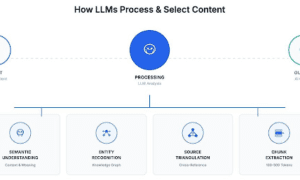In the world of employment, test scores play an essential role in assessing employee competency. Accurately evaluating employees’ skills and competencies is imperative for organizational success. Assessment tests provide invaluable insights, enabling targeted training and growth plans. It doesn’t matter if it’s a standardized test, a job-specific assessment, or a certification exam needed. Based on their performance, evaluated scores serve as objective measures of a candidate’s qualification. This article explores the importance of test scores in the hiring process and how they contribute to building a skilled and capable workspace.
The Imperative of Accurate Employee Competency Assessment
Hiring talented employees who align with the organization’s values and goals is a basic thing. However, employee skills assessment reveals a startling truth! 74% of employers admit they’ve hired the wrong person for a position. This high rate of regrettable hiring decisions confirms that resumes, interviews, and recommendations aren’t enough. Businesses need concrete insights into candidates’ competencies.
Replacing a bad hire is extremely costly in terms of time and money. Estimates indicate that losing an employee in the first year can cost upwards of 30% of their annual salary. This accounts for expenses like recruiting, interviewing, onboarding, training, and ramp-up time to full productivity.
In roles that require extensive technical skills or experience, poor hiring decisions can be especially detrimental. For example, hiring an unqualified candidate for an engineering role could result in mistakes that lead to dangerous product defects. The financial and reputational damage could be immense.
Using pre-employment skills assessment tests is one of the most effective ways to reduce the risks of making a bad hire. These tests objectively measure a candidate’s competencies, verifying that they possess the required technical abilities, soft skills, and cultural fit for the role. Employee can prepare through aptitude test preparation available online to upgrade their skills.
With regular competency assessments, managers gain accurate and up-to-date insights about their team members. This allows them to precisely identify current skills gaps within the organization. Assessment data also enables tailored learning and development initiatives that optimize training investments by focusing on the most critical skill shortages.
Competency assessments are an indispensable tool for minimizing regrettable hiring decisions while fostering continuous growth and improvement. The benefits of assessment data simply cannot be overstated when it comes to building an engaged, high-performing workforce.
Distinguishing Between Skills and Competencies
Before exploring assessment methods, it’s important to understand the difference between skills and competencies. Skills refer to specific learned abilities required for a job. For example, computer programming or equipment operation skills.
- Skills refer to specific learned abilities that are required to perform a job function. For example, skills like computer programming, equipment operation, project management, or fluency in a foreign language. Skills tend to be concrete and measurable.
- Competencies encompass broader behavioral qualities, knowledge, and abilities. Competencies include leadership, communication, collaboration, problem-solving, adaptability, and emotional intelligence. They represent a combination of behaviors, attitudes, and thought processes.
Specific learned abilities like programming, writing, or operating machinery constitute skills. However, competencies encompass broader behavioral qualities, knowledge, and abilities. Competencies represent potential; skills showcase capability. While skills are imperative, evaluating competencies provides a holistic overview of employees’ strengths, weaknesses, and untapped potential.
However, up to 78% of resumes are misleading, with 46% containing outright lies Criteria Corp. This demonstrates the need to verify candidates’ skills and competencies through concrete evaluation methods. With the high inaccuracy of resumes, let’s explore the various techniques to comprehensively assess employees.
Methods to Assess Employee Skills and Competencies
With the prevalence of embellished resumes, organizations need a multifaceted approach to competency assessment. Here are some of the most effective methods:
- Performance Evaluations: Reviewing employee accomplishments and progress periodically. Celebrating successes while tracking areas needing improvement.
- Peer Reviews: Coworkers providing feedback on teamwork abilities, communication skills, and role effectiveness. Uncovering unrecognized competencies.
- Self-Assessments: Employees evaluate their skills and competencies. Highlights abilities not fully utilized in the current role.
- Behavioral Interviews: Analyzing how candidates approached past situations to predict future performance.
- Skills Tests: Assess competency for specific job functions through demonstrations, simulations, or exams.
- Simulation Exercises: Observing employees handling realistic on-the-job scenarios. Evaluating competency in action.
According to the Society for Human Resource Management, 75% of HR professionals report skills gaps among job candidates. Assessment tests provide insights into learning potential and the ability to upgrade skills. Now let’s cover the best practices for optimal competency evaluation.
Best Practices for Skill and Competency Assessment
Implementing best practices ensures accurate, comprehensive evaluations. This leads to tangible benefits like reduced turnover. Here are some top tips:
- Align With Job Demands: Assess the specialized skills and broader competencies required for excellence in the role.
- Build Competency Model: Outline the optimal mix of knowledge, behaviors, and abilities. Assess gaps.
- Utilize Multiple Methods: Leverage interviews, skills testing, and peer reviews for comprehensive insights.
- Guide Development Plans: Use assessment data to craft targeted training to address weaknesses.
- Schedule Regularly: Quarterly or biannual assessments provide up-to-date insights to enhance retention.
- Transparent Process: Convey assessment criteria and share results openly with employees.
Research by Aberdeen Group shows companies using pre-hire assessments have 39% lower turnover. Hiring managers also report 36% more satisfaction with data-driven hiring decisions.
Tangible Benefits of Skill and Competency Assessments
Rigorous competency evaluations provide many tangible benefits:
- In-depth Insights: Multifaceted assessments provide a detailed overview of employee strengths, weaknesses, and potential.
- Identify Gaps: Construct competency models to uncover organizational skill deficiencies.
- Boost Performance: Address weak areas through targeted training to continually enhance employee effectiveness.
- Discover Potential: Tap into unrecognized competencies to optimize talent utilization.
- Evaluate Training: Assess skill improvements after training programs. Tweak approaches as needed.
- Address Shortages: Use assessments to rapidly upskill employees to fill talent gaps.
- Retain Top Talent: Ongoing competency evaluation and development entices employees to stay.
Regular rigorous employee competency evaluation provides the data to optimize human capital the most vital organizational asset.
Frequently Asked Questions
What’s the difference between skills and competencies?
Skills refer to specific learned abilities while competencies include broader behaviors, knowledge, and abilities.
What’s a popular competency assessment method?
Performance reviews are commonly used, providing insights into skills and development areas.
What’s the most common competency evaluation format?
Psychometric tests measure aptitude and personality to determine role or organizational fit.
Conclusion
To make the most of our employees’ skills and find areas for improvement, we need to assess their abilities. Regular assessments, including interviews, tests, and peer reviews, offer valuable insights to guide development. By using effective evaluation methods, organizations can benefit from reduced turnover and improved talent utilization, resulting in overall performance excellence. Assessing employee competency forms the foundation of organizational success.






























